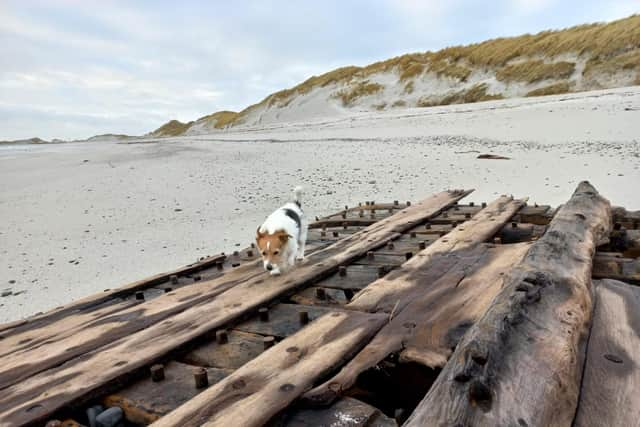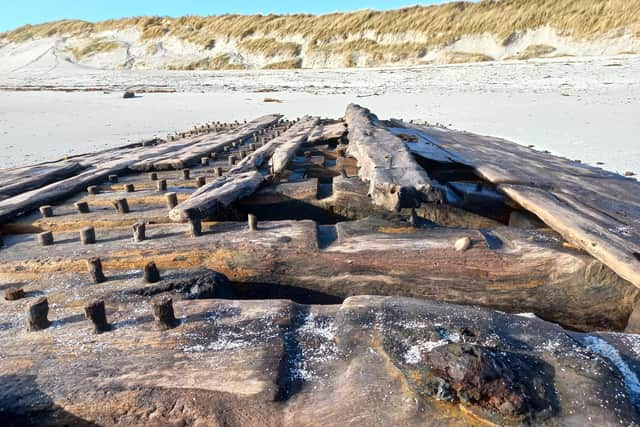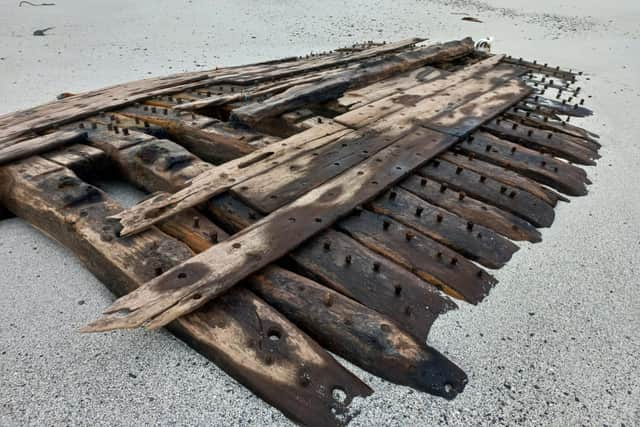'Incredible' shipwreck washed up on Scottish island after big storm
An ‘incredible’ and beautifully preserved shipwreck has washed up on an Orkney beach.
A storm released the wreck of a vessel – which could date from the 1700s – from the seabed and left it on the beach at Cata Sand on the small island of Sanday.
Advertisement
Hide AdAdvertisement
Hide AdThe wreck has stirred much curiosity among residents, many who have great knowledge of wrecks and marine archaeology, with hopes it can now be saved before the tide washes it away again.


The boat is unusual in that dozens of tree pegs, or tree nails, are still intact holding a large section of the vessel together.
The remains of the vessel, which measures 14ft long in some places, were found by a young Sanday resident, Alfie Ap Dffyd, who was out walking his dog when the wreck came into view.
David Walker, who co-runs Orkney Retreats in Sanday, said he “jumped in the van” on seeing the wreck on social media.


Mr Walker said: “It is an incredible thing, when you get to see it up close and touch it and see the craftsmanship that has gone into this ship. We know that is has been there, under the water for probably more than 200 years and it hasn’t been seen since then, until the big last storm here.”
Some “fantastic” theories about the origins of the boat had already emerged locally given the knowledge of seafaring on the island.
Mr Walker said: “The Newark Bay area has always been quite prone to shipwrecks.


"On this wreck you can see these incredible tree nails – or tree pegs – used in its construction. We believe that means the latest date it could be would be around 1810 to 1820 but we believe it more likely to be from the 1700s.
Advertisement
Hide AdAdvertisement
Hide Ad“It could be British, it could be Scottish and it could be Orcadian. It could also easily be from Norway or the Netherlands given there were so many ships using this route in the past.”
Residents want to save the remains of the boat and are appealing for those with expertise in this area to get in touch.
Mr Walker said: "It will take a very high tide and a very big storm to pull it into the water and it is very well anchored into the beach at the moment.


“We really want to get the boat saved and already I think the island feels very protective about it.
"I am going down there everyday to check that it is still there
"The local historical society has recorded as much as it can and we are really passionate about finding out more.”
"We are putting the plea out there to people who can help us save this very special ship . We think we have something of historical importance here.”
Archaeologists worked at Cata Sand for many years to save the remains of five Neolithic houses which were discovered in 2015 after the stonework was exposed by a storm.
The skeletons of 12 whales were also found buried in two pits and may have been linked to a Sanday tradition of driving whales onto the sand on a Sunday to butcher them for blubber.